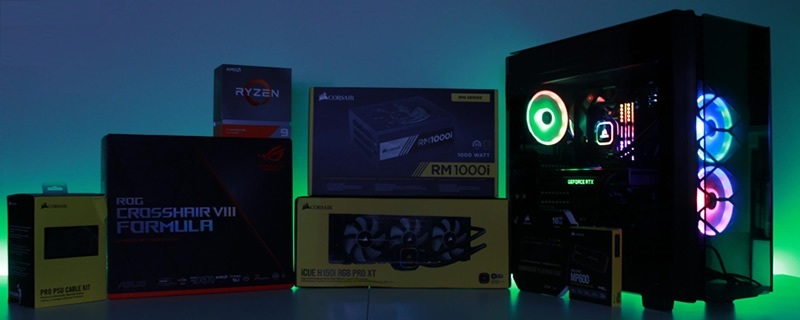Moving our GPU testing to AMD Ryzen
Conclusion – OC3D is Ready for Ampere Â
OC3D has moved its graphics card testing to an AMD Ryzen platform. Love it or hate it, the transition is finished, and we are already testing graphics cards on our new testbed.Â
As we move forward, storage performance is going to become increasingly important within games, and all new high-end graphics cards are going to ship with PCI express 4.0 support. That means that we need PCI express 4.0 support within our new test system, and that means that we need to use a Ryzen-based hardware platform for future testing.Â
Another factor that’s worth considering is that both next-generation consoles feature eight cores and sixteen threads. If games start using those high thread counts, that means that high core count processors will begin to become a necessity for new AAA PC experiences. Beyond that, Ryzen processors are growing in popularity within the PC market, and developers know that AMD’s Zen architecture sits at the core of both next-generation consoles. This mix makes AMD’s Ryzen processors a solid bet for our use cases, both when it comes to games testing and GPU analysis.Â
While Intel can offer the best gaming performance in many titles, today’s blue team offerings cannot provide us with PCI express 4.0 support and consume a lot more power than what AMD delivers with Zen 2. With our Ryzen 9 3950X, we also offer more cores than what any upcoming game should conceivably need, giving us a little insurance for when core count requirements start increasing with newer game releases. Another factor with X570 is that we have guaranteed support for AMD’s Zen 3 offerings, giving us a useful upgrade path; should we need it.
It is worth noting that our old test system used Intel’s X99 platform and a Broadwell-E series processor. AMD’s Zen 2-based Ryzen 3000 series desktop processors represent a significant upgrade over Broadwell. Beyond that, our new system also features faster storage and faster DRAM. Our Ryzen 9 3950X processor offers us a significant performance upgrade over our existing test system, and the addition of 3600MHz Dominator Platinum RGB memory and a PCIe 4.0 MP600 SSD only sweetens this deal.Â
The next generation of console gaming will have a significant impact on the PC gaming landscape, bringing storage, CPU performance and new GPU features to the forefront. Things are going to change within the PC market, and Nvidia’s cheaper than expected RTX 30 series pricing is evidence of this. We are on the cusp of a transitional period for the gaming market, and we bet that IO performance will become increasingly important moving forward.Â
Going for AMD isn’t a fanboy decision, it’s a longevity decision. When Microsoft’s DirectStorage API starts to become used in future games, I/O bandwidth requirements will shoot through the roof. With a PCIe 4.0 compatible system, we can rest assured that we have the bandwidth we need to eliminate that potential bottleneck. It may take a while for developers to start fully utilising DirectStorage and similar APIs. Still, you can be sure that developers will begin to stretch the storage systems of both the Xbox Series S/X and PS5 to their limits as soon as they find a use for it.Â
Most of our other component selections were driven by ease of use and specific testing requirements. Corsair’s RM1000i power supply offers us an easy way to track power consumption data and the peace of mind that comes with a personal track record of reliability. Corsair’s Obsidian 500D SE also has many desirable features for a graphics card testbed, such as its hinged side panel and large volume. These factors make GPU replacement a simple process and accommodating large graphics cards a simple task. There is a reason why graphics card reviews aren’t conducted using Mini ITX systems.Â
Some reviewers use open-air test beds for their graphics card testing, and while there are benefits to that methodology, it does not match real-world use case scenarios. Almost everyone uses their graphics cards in a PC case, and that’s why we feel that our testbeds need to be modelled after real-world PCs.Â
In future reviews and videos, we will detail our testing methodology and other factors in more detail. Â



